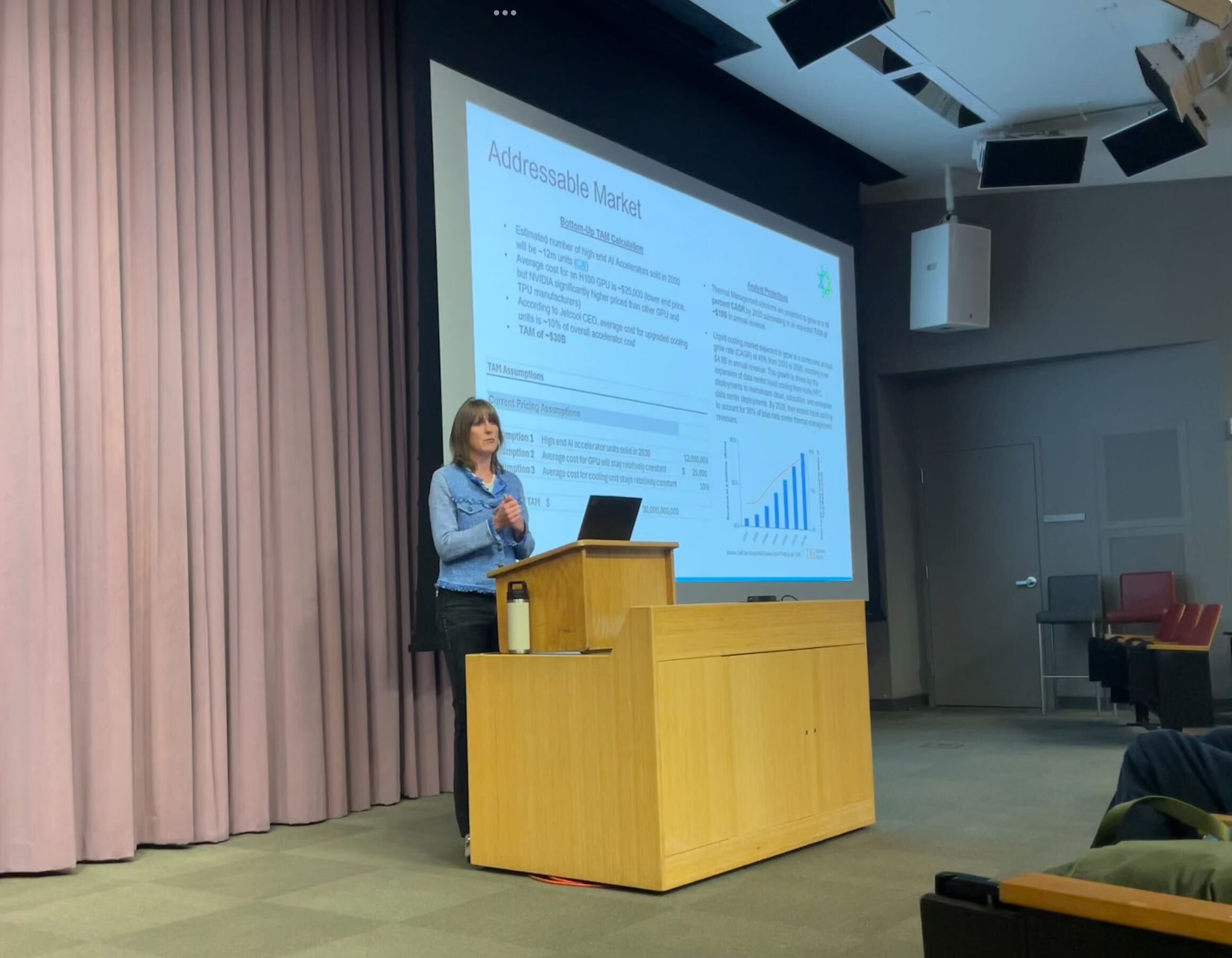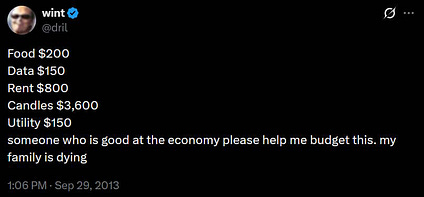$1,000-a-month pilot in Texas and Illinois shows mixed results for low-income families – Texas Standard

Report on the Efficacy of Unconditional Cash Transfers and Implications for Sustainable Development Goals
Executive Summary
A white paper by the nonprofit research organization OpenResearch details a three-year study on the impact of unconditional cash transfers (UCTs) on low-income families in Texas and Illinois. The study sought to determine if direct financial assistance could mitigate disparities in health, education, and economic outcomes, directly addressing core tenets of the Sustainable Development Goals (SDGs). While the cash transfers provided flexible, immediate resources for recipients, the research did not find significant, population-level improvements in long-term household income or children’s developmental outcomes. These findings suggest that while cash assistance can address immediate needs related to SDG 1 (No Poverty), it is insufficient as a standalone solution to overcome systemic barriers hindering progress on SDG 3 (Good Health and Well-being), SDG 4 (Quality Education), and SDG 10 (Reduced Inequalities).
Study Methodology and Design
Research Objectives
The primary objective was to evaluate whether providing substantial, no-strings-attached cash payments to low-income households could produce measurable improvements in health, educational, and career outcomes. The study aimed to provide evidence on effective strategies for achieving SDG 1 (No Poverty) and SDG 10 (Reduced Inequalities) by directly empowering families with financial resources.
Study Parameters
- Participants: The study involved 3,000 low-income individuals across Texas and Illinois, states selected for their differing social safety net policies.
- Treatment Group: 1,000 participants received $1,000 per month for a duration of three years.
- Control Group: A control group of participants received $50 per month over the same period for comparison.
- Duration: The study spanned three years, with initial payments disbursed in the fall of 2020 during the global pandemic.
- Administration: Cash payments were funded by private donors and administered by local nonprofit social service organizations.
Key Findings and SDG Implications
Impact on Primary Development Indicators
The study concluded that the UCT program did not produce the hypothesized large-scale effects on key markers of long-term well-being. This has significant implications for policies designed to meet several SDGs.
- Economic Stability (SDG 1, SDG 8): The research found no significant changes in longer-term household income, indicating that the cash transfers did not, on average, move families out of poverty in a sustainable way.
- Child Health and Well-being (SDG 3): The study did not detect measurable improvements in children’s behavioral outcomes at a population level.
- Educational Outcomes (SDG 4): Similarly, there were no significant findings to suggest that the cash transfers led to improved educational outcomes for children in recipient families.
Despite the lack of movement on these marquee outcomes, the report emphasizes that the cash was beneficial in allowing families to meet a wide variety of immediate and specific needs, providing short-term relief from financial precarity.
Systemic Barriers to Progress
The research highlights that financial resources alone may be insufficient to overcome deeply entrenched systemic issues that prevent progress toward the SDGs.
Contextual Challenges
- Interaction with Social Safety Nets: The study was designed to compare outcomes in Illinois (more generous social safety net) and Texas (less generous). However, researchers found no significant difference in the program’s effects between the two states.
- Structural Hurdles (SDG 11): The report notes that even with cash in hand, families faced other barriers. For example, participants who wanted to secure better housing were often unable to do so due to low credit scores or income-to-rent ratio requirements, demonstrating how financial aid can be negated by other systemic factors related to SDG 11 (Sustainable Cities and Communities).
- Complexity of Disadvantage: The findings suggest that disparities are driven by a complex interplay of factors beyond parental income, including the quality of schools, housing, and neighborhood environments.
Conclusion: Re-evaluating Strategies for Achieving the SDGs
The OpenResearch study, consistent with other recent research, indicates that while UCTs provide essential and flexible resources, they do not appear to be a panacea for resolving the root causes of inequality and poverty. The lack of significant impact on long-term child development and economic outcomes underscores the need for more comprehensive and integrated approaches. To effectively advance SDG 1 (No Poverty), SDG 3 (Good Health and Well-being), SDG 4 (Quality Education), and SDG 10 (Reduced Inequalities), policy must address the interconnected systems that perpetuate disadvantage. The critical question moving forward is not whether families need more resources, but rather what combination of financial support, services, and systemic reforms is required to create lasting positive change.
Analysis of Sustainable Development Goals in the Article
1. Which SDGs are addressed or connected to the issues highlighted in the article?
-
SDG 1: No Poverty
The article’s central theme is the use of unconditional cash transfers to help “lower-income households” and “get out of poverty.” This directly aligns with the primary goal of SDG 1, which is to end poverty in all its forms everywhere.
-
SDG 3: Good Health and Well-being
The article explicitly states that “children born into lower-income households typically have worse health… outcomes.” The study mentioned in the article also attempted to measure changes in “kids’ health,” connecting poverty alleviation efforts to health and well-being.
-
SDG 4: Quality Education
The text highlights that children from low-income families often have worse “educational… outcomes.” A key objective of the research was to see if cash transfers led to changes in “children’s behavioral or educational outcomes,” linking financial resources to educational attainment.
-
SDG 10: Reduced Inequalities
The article begins by framing the problem as one of “disparities” in health, education, and career outcomes between children from different income levels. The entire premise of the cash transfer program is to address these inequalities by providing resources to disadvantaged families.
2. What specific targets under those SDGs can be identified based on the article’s content?
-
Target 1.2: Reduce poverty in all its dimensions
The program’s goal of giving cash to low-income families to “meet their most urgent needs” and “help them get out of poverty” is a direct attempt to reduce poverty according to national definitions.
-
Target 1.3: Implement social protection systems
The unconditional cash transfer program is a form of social protection. The article discusses how these transfers “interact with the existing social safety net” and mentions that the research was designed to look at states with “different policy contexts” regarding social support, which directly relates to the implementation and effectiveness of social protection systems.
-
Target 4.1: Ensure free, equitable, and quality education
The study’s focus on measuring “children’s behavioral or educational outcomes” as a result of the cash transfers connects directly to the goal of ensuring equitable and quality education, as it investigates whether financial stability at home can improve a child’s educational prospects.
-
Target 10.2: Promote social and economic inclusion
By providing financial resources ($1,000 a month) to low-income families, the program aims to reduce economic disparities and empower these families to better participate in the economy. The article notes that despite the cash, families faced other barriers like low credit scores, highlighting the complexities of achieving full economic inclusion.
3. Are there any indicators mentioned or implied in the article that can be used to measure progress towards the identified targets?
- Household Income Level: The article mentions that the study looked for changes in “longer-term household income.” This is a direct indicator for measuring poverty levels (Target 1.2) and economic inclusion (Target 10.2).
- Child Health Outcomes: The research aimed to measure the impact on “kids’ health.” This serves as an implied indicator for SDG 3, assessing the well-being of children in beneficiary families.
- Child Educational Outcomes: The study explicitly measured “children’s behavioral or educational outcomes.” This is a direct indicator for assessing progress towards quality and equitable education (Target 4.1).
- Value of Social Protection Grant: The specific amount of the cash transfer, “$1,000 a month,” is a quantitative indicator of the scale of the social protection measure being tested (Target 1.3). The comparison with the control group receiving “$50 a month” provides a baseline for measuring the impact.
SDGs, Targets, and Indicators Table
| SDGs | Targets | Indicators |
|---|---|---|
| SDG 1: No Poverty | 1.2: Reduce at least by half the proportion of people living in poverty. 1.3: Implement nationally appropriate social protection systems. |
– Changes in “longer-term household income.” – Provision of unconditional cash transfers ($1,000 per month) as a social protection measure. |
| SDG 3: Good Health and Well-being | 3.8: Achieve universal health coverage, including financial risk protection. | – Measurement of “kids’ health” outcomes. |
| SDG 4: Quality Education | 4.1: Ensure that all children complete free, equitable and quality primary and secondary education. | – Measurement of “children’s behavioral or educational outcomes.” |
| SDG 10: Reduced Inequalities | 10.2: Empower and promote the social, economic and political inclusion of all. 10.4: Adopt policies, especially social protection policies, to achieve greater equality. |
– Comparison of outcomes between the treatment group ($1,000/month) and control group ($50/month) to measure the reduction of disparities. – Analysis of how cash transfers interact with the “existing social safety net.” |
Source: texasstandard.org

What is Your Reaction?
 Like
0
Like
0
 Dislike
0
Dislike
0
 Love
0
Love
0
 Funny
0
Funny
0
 Angry
0
Angry
0
 Sad
0
Sad
0
 Wow
0
Wow
0

















































:focal(1500,1000)/https://media.globalcitizen.org/a6/9a/a69a4720-d8a1-4715-b596-18738d03c05c/rotary_polio_hero_image.jpg?#)






/countries/sri-lanka/photo-credit---dmc-sri-lanka.tmb-1200v.jpg?sfvrsn=dc298bcc_1#)
















